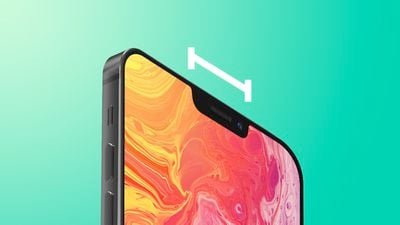While we are likely at least six months away from Apple unveiling the so-called iPhone 13 lineup, rumors about the devices are starting to accumulate, so we've put together this recap of everything that is expected so far.

The upcoming iPhone 13 lineup will consist of the same four models and the same screen sizes as the iPhone 12 lineup, according to reputable analyst Ming-Chi Kuo, suggesting that there will be a 5.4-inch iPhone 13 mini, 6.1-inch iPhone 13, 6.1-inch iPhone 13 Pro, and 6.7-inch iPhone 13 Pro Max. These names are simply placeholders, as Apple could certainly decide to use iPhone 12s branding or entirely different naming.
Key features expected across all four iPhone 13 models:
- A15 chip: A faster system-on-a-chip in the next iPhones is a virtual guarantee, with the iPhone 13 lineup expected to be equipped with an Apple-designed A15 chip manufactured by TSMC based on its 5nm+ process.
- Smaller notch: The notch that houses the front camera and Face ID components will be reduced in size on iPhone 13 models, according to analyst Ming-Chi Kuo. Apple has achieved this feat by integrating various Face ID sensors into a single module, according to Taiwanese publication DigiTimes.
- Larger batteries: iPhone 13 models will have larger battery capacities than iPhone 12 models, thanks to some space-saving design choices inside the upcoming devices, such as an integrated SIM card slot on the logic board, according to Kuo. iPhone 13 models are expected to be slightly heavier as a result.
- Sensor-shift camera stabilization: Apple plans to expand sensor-shift image stabilization to all iPhone 13 models, according to Kuo and DigiTimes. This likely means that the iPhone 12 Pro Max's Wide lens with sensor-shift will be expanded to the entire iPhone 13 lineup. The technology stabilizes the camera's sensor instead of the lens for even greater image stabilization and improved photo quality.
- 5G enhancements: iPhone 13 models will be equipped with Qualcomm's Snapdragon X60 modem, according to Kuo and DigiTimes. Built on a 5nm process, the X60 packs higher power efficiency into a smaller footprint compared to the 7nm-based Snapdragon X55 modem used in iPhone 12 models, which could contribute to longer battery life. With the X60 modem, iPhone 13 models would also be able to aggregate 5G data from both mmWave and sub-6GHz bands simultaneously to achieve an optimal combination of high-speed and low-latency network coverage.
- Wi-Fi 6E: iPhone 13 models will be the first to support Wi-Fi 6E, according to Barclays analysts Blayne Curtis and Thomas O'Malley. Wi-Fi 6E offers the features and capabilities of Wi-Fi 6, including higher performance, lower latency, and faster data rates, extended into the 6 GHz band. The additional spectrum will provide a lot more airspace beyond existing 2.4GHz and 5GHz Wi-Fi, resulting in increased bandwidth and less interference for devices that support Wi-Fi 6E.
- Lightning connector: Despite previously predicting that Apple would release a high-end iPhone without a Lightning connector in 2021, Kuo recently said there will be "no portless design" this year. Kuo expects iPhones to continue using Apple's proprietary Lightning connector for the "foreseeable future."
- mmWave expansion: A supplier-focused report from the Economic Daily News suggested that iPhone 13 models may support ultra-fast mmWave 5G in additional countries outside of the United States.
New features expected to be exclusive to the two iPhone 13 Pro models:
- 120Hz display: iPhone 13 Pro models will be equipped with low-power LTPO displays with support for a 120Hz refresh rate, according to Kuo, display industry analyst Ross Young, and leakers such as Max Weinbach and Jon Prosser. A 120Hz refresh rate would result in smoother or more "buttery" content and scrolling. Like the 2017 and newer iPad Pro, iPhone 13 Pro models will likely have a power-preserving "ProMotion" feature with a variable refresh rate up to 120Hz.
- Ultra Wide lens improvements: iPhone 13 Pro models will feature an upgraded Ultra Wide camera lens with a wider ƒ/1.8 aperture and autofocus, compared to ƒ/2.4 and fixed focus on iPhone 12 models, according to Barclays analysts and Kuo. The Ultra Wide lens will also be gaining sensor-shift stabilization, according to DigiTimes.
Apple typically announces its new iPhone lineup in September, but the iPhone 12 lineup was unveiled in October, a delay that was attributed to the pandemic. Bookmark our regularly updated iPhone 13 roundup linked below to keep track of the latest rumors.
























